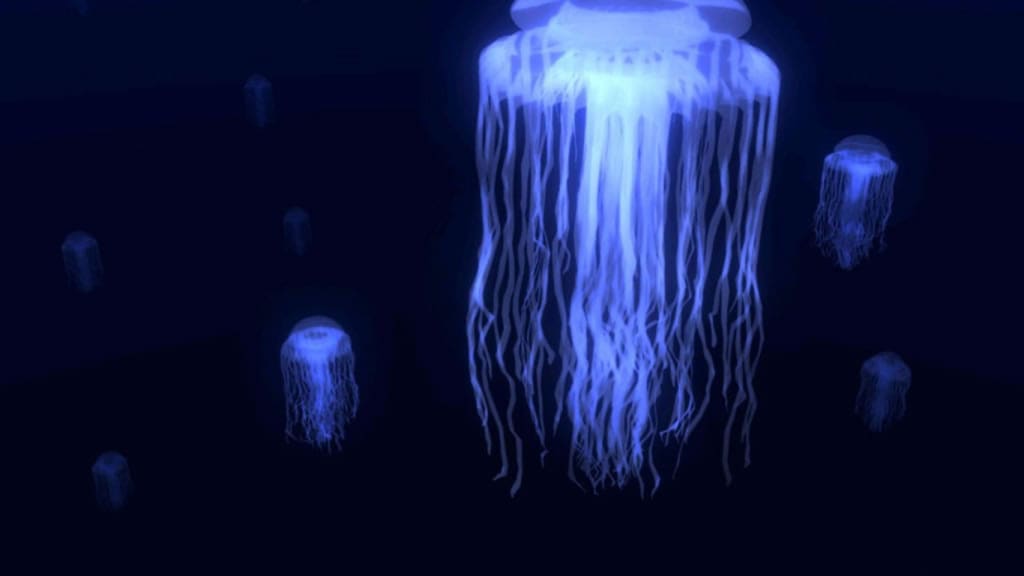Cnidarians: Guardians of Marine Biodiversity and Ecosystem Functionality
The Fascinating World of Cnidarians

Introduction:
Within the intricate web of the marine ecosystem, every organism plays a vital role. While some creatures receive well-deserved attention, others often go unnoticed. One such group is the cnidarians, a phylum of organisms encompassing corals, anemones, hydroids, and jellyfish. These enigmatic creatures contribute significantly to the diversity and stability of the marine ecosystem. Through their roles as predators, shelter providers, and filter feeders, cnidarians uphold the intricate balance of life within our oceans. In this article, we delve into the captivating world of cnidarians and their profound impact on marine ecosystems.
Exploring the Phylum Cnidaria:
Comprising approximately 13,000 living species, cnidarians are intriguing organisms characterized by their simplicity and captivating beauty. They possess distinct features, such as radial symmetry, with body structures radiating outward from the center. These multicellular organisms typically consist of an internal cavity and a mouth. Notably, cnidarians exhibit two basic body forms, the polyp and the medusa, which often alternate within their life cycles.
Polyps and Medusae:
Polyps, tube-shaped and sessile, sport a ring of tentacles around their mouths. In contrast, medusae resemble umbrellas or bells and possess the ability to move freely with ocean currents.
Life Cycle of Cnidarians:
The life cycle of a moon jellyfish offers a fascinating glimpse into cnidarian development. Starting as larvae, they swim down to the seabed and attach themselves to rocks, where they transform into small polyps known as scyphistoma. Over time, the polyp undergoes strobilation, rearranging itself into a stack-of-coins-like structure, with each coin representing a tiny medusa. These medusae are released, floating away to mature into adults. Some cnidarian species even possess the ability to revert to earlier life cycle stages, enabling continuous regeneration.
Jellyfish: Predators of the Sea:
Jellyfish, often referred to as medusae, exhibit a staggering diversity. The largest, such as the lion's mane jellyfish, boast tentacles longer than 27 meters, surpassing the length of even the mighty blue whale. Many jellyfish are slow-moving planktonic animals, relying on ocean currents for mobility. Despite their seemingly placid nature, jellyfish have long been recognized as vital predators in the marine realm. Their long tentacles equipped with stinging cells called nematocysts serve various functions, including capturing prey and defending against predators.
Nematocysts: Unifying Feature of Cnidarians:
Nematocysts are specialized capsules found in nearly all cnidarian species, ranging from corals and anemones to jellyfish. These capsules house coiled threads that can be explosively discharged to ensnare prey or deter threats. A modified flagellum within the capsule acts as a sensory trigger, rapidly ejecting the nematocyst thread upon contact. This adaptation allows organisms that cannot actively hunt to employ "sit and trap" or "float and trap" strategies, using nematocysts to stun or kill prey that comes into contact with their transparent tentacles. The Portuguese Man of War exemplifies this strategy, with its tentacles armed with powerful nematocysts used to capture and immobilize small creatures.
Cnidarians as Builders and Protectors:
Many cnidarians form colonies, such as the Portuguese Man of War, composed of multiple zooids working in harmony. In the open ocean, siphonophores, consisting of medusa or polyp-like zooids, thrive. On the seafloor, sedentary polyp colonies secrete calcium carbonate skeletons, forming rigid structures we know as corals. These corals play a crucial role in the marine ecosystem, creating expansive reefs that provide shelter for an array of reef fish and invertebrates, while protecting coastlines from wave erosion and tropical storms. Corals also serve as carbon sinks, storing carbon in their skeletons and preventing its release into the atmosphere, even after their demise.
Symbiotic Relationships and Interdependence:
Coral polyps form vital symbiotic relationships with tiny algae known as zooxanthellae. These algae reside within coral tissues, harnessing sunlight to produce sugars through photosynthesis and providing energy to their coral hosts. In return, the corals offer protection and nutrients to the algae. This mutualistic relationship sustains the existence of vibrant coral reefs, which support an astonishing 25% of known marine species. Similarly, sea anemones establish symbiotic bonds with crabs, utilizing their shells as transport and gaining better access to food. Clownfish rely on anemones for shelter, while developing a unique immunity to their stinging cells through the secretion of a protective mucus layer.
Cnidarians: Crucial Contributors to Marine Biodiversity:
The extraordinary diversity of cnidarians manifests in their pivotal role within marine communities. Coral reefs, constructed by millions of cnidarians, harbor unparalleled biodiversity. Jellyfish serve as essential predators in open ocean food webs, while simultaneously providing sustenance for numerous other species. Sea anemones offer protection and habitat for various marine organisms, including the iconic clownfish. These captivating creatures, spanning diverse habitats from open waters to coastlines and deep-sea environments, intricately shape marine ecosystems and foster biodiversity.
Conclusion:
Cnidarians, with their intriguing life cycles, specialized stinging cells, and symbiotic relationships, emerge as guardians of marine biodiversity and ecosystem functionality. From the majestic coral reefs that support countless species to the mesmerizing jellyfish traversing the open ocean currents, cnidarians leave an indelible mark on our marine world. By understanding and appreciating the significance of these enigmatic creatures, we can better appreciate the delicate balance and interdependence that sustains life within our oceans.
About the Creator
Enjoyed the story? Support the Creator.
Subscribe for free to receive all their stories in your feed. You could also pledge your support or give them a one-off tip, letting them know you appreciate their work.






Comments
There are no comments for this story
Be the first to respond and start the conversation.